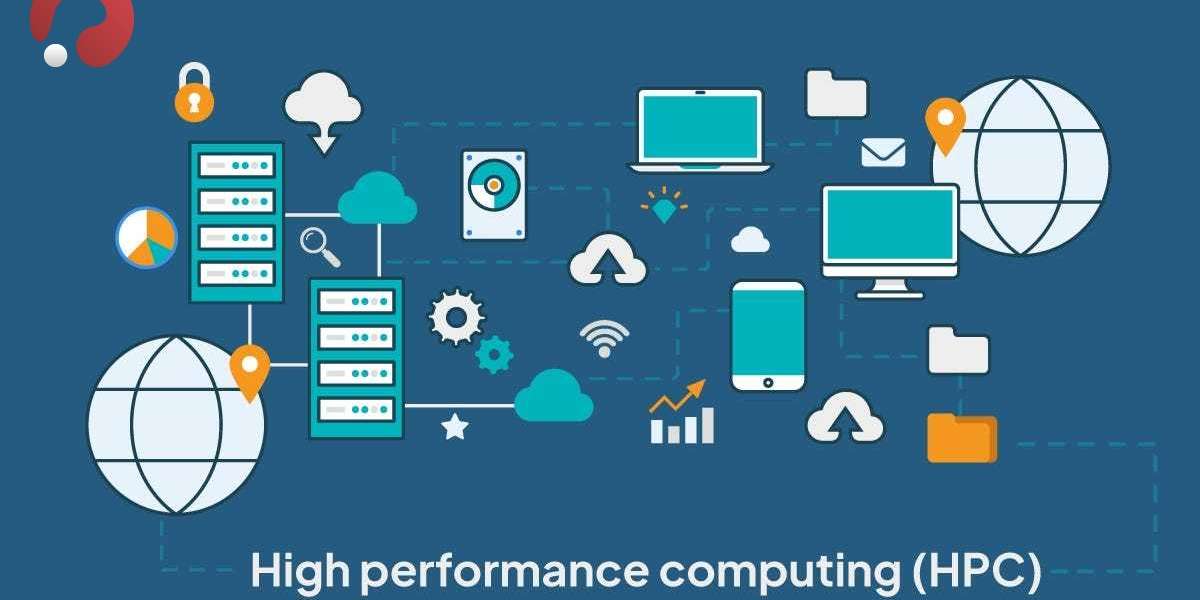High Performance Computing Market Overview
The High Performance Computing Market is witnessing rapid growth, driven by the increasing demand for computational power across industries such as research, healthcare, artificial intelligence (AI), machine learning, and data analytics. HPC systems, which are designed to process complex and large-scale computations, are becoming essential for solving problems that traditional computing cannot address efficiently. These systems provide unparalleled processing capabilities by leveraging parallel processing and massive amounts of storage, enabling organizations to perform tasks like weather forecasting, drug discovery, and large-scale simulations. With continuous advancements in hardware, software, and cloud technologies, the HPC market is expected to see substantial growth in the coming years. As organizations increasingly shift toward data-intensive applications, the need for powerful, scalable computing solutions is only set to rise, making HPC a cornerstone of technological innovation across various sectors.
Market Key Players
The High Performance Computing market features a diverse array of key players, ranging from hardware manufacturers to software and service providers. Notable companies in this sector include Intel Corporation, NVIDIA Corporation, Advanced Micro Devices (AMD), IBM Corporation, Hewlett Packard Enterprise (HPE), Dell Technologies, and Cray Inc. These players dominate the market by offering state-of-the-art processors, graphics processing units (GPUs), storage solutions, and supercomputing systems. Additionally, companies like Microsoft, Amazon Web Services (AWS), and Google Cloud are leading the charge in offering cloud-based HPC services, making high-performance computing more accessible to organizations of all sizes. The increasing focus on AI and machine learning capabilities is driving significant investments from these players to develop next-generation technologies that address the growing demand for faster processing and real-time analytics.
Get a Sample Report + All Related Graphs Charts:
https://www.marketresearchfuture.com/sample_request/2698
Market Segmentation
The High Performance Computing market can be segmented based on several factors, including type, deployment model, end-user industry, and geography. In terms of type, the market is divided into hardware, software, and services. The hardware segment includes servers, processors, storage devices, and networking components, while the software segment comprises HPC-specific software for managing and optimizing computational tasks. Services include cloud-based HPC solutions, which are increasingly popular due to their scalability and cost-efficiency. By deployment model, HPC can be categorized into on-premise and cloud-based solutions. The on-premise model is traditionally favored by large enterprises, while cloud-based HPC is gaining momentum due to its flexibility, scalability, and reduced upfront costs.
In terms of industry applications, the High Performance Computing market serves sectors like energy, manufacturing, healthcare, government and defense, telecommunications, and research and academia. HPC systems enable faster data analysis, advanced simulations, and complex modeling, benefiting these industries in diverse ways. The healthcare industry, for example, utilizes HPC for drug discovery and genomic research, while the energy sector relies on HPC for simulations related to oil and gas exploration or renewable energy solutions. The research and academic sectors continue to lead in HPC adoption, with universities and research institutions investing heavily in supercomputing systems for scientific research and innovation.
Market Opportunities
The global High Performance Computing market is full of opportunities, primarily driven by the growing demand for AI, big data analytics, and cloud computing. With advancements in machine learning, deep learning, and natural language processing, there is a significant opportunity for HPC systems to power AI workloads that require massive computational resources. In the healthcare industry, the increasing adoption of personalized medicine, bioinformatics, and genomics research presents an opportunity for HPC to accelerate drug discovery and improve patient outcomes. Additionally, as industries continue to adopt IoT devices and sensor networks, there is a growing need for real-time data processing and advanced analytics, further boosting demand for HPC.
The cloud-based HPC model also presents significant opportunities, particularly for small and medium-sized enterprises (SMEs) that may not have the capital for large-scale on-premise systems. Cloud HPC solutions allow organizations to access powerful computing resources without making substantial upfront investments in hardware and infrastructure. The growing trend of hybrid cloud environments, where companies integrate on-premise systems with cloud-based solutions, also provides a lucrative opportunity for HPC service providers to offer flexible, scalable, and cost-effective solutions.
Restraints and Challenges
Despite the immense potential of the HPC market, several challenges hinder its growth. One of the primary constraints is the high cost of implementing and maintaining HPC systems, especially for smaller organizations. The need for specialized hardware, including powerful processors, high-speed interconnects, and massive storage systems, can lead to significant capital expenditure, which may be a barrier for some companies. Moreover, HPC systems require skilled personnel to manage and optimize workloads, further increasing operational costs.
Another challenge is the energy consumption of high-performance computing systems. As HPC systems become more powerful, their energy requirements increase, raising concerns about sustainability and the environmental impact of supercomputing. Cooling systems, power supply, and the overall carbon footprint associated with running large-scale data centers are critical issues that need to be addressed.
Furthermore, the rapid pace of technological advancements in HPC means that organizations must constantly upgrade their systems to stay competitive, which can be a significant challenge for companies with limited budgets or resources. The complexity of integrating new HPC technologies with existing IT infrastructure also poses a hurdle for organizations looking to modernize their systems.
Regional Analysis
The High Performance Computing market is experiencing significant growth across all regions, but there are notable differences in adoption and development across various geographies. North America, led by the United States, is currently the largest market for HPC, driven by robust investments in research and development, as well as strong demand from industries such as defense, healthcare, and academia. The U.S. government's initiatives to support high-performance computing infrastructure, such as the National Strategic Computing Initiative, have further propelled market growth in the region.
Europe is also a key player in the global HPC market, with countries like Germany, the UK, and France investing heavily in HPC for scientific research, automotive design, and manufacturing. The region’s emphasis on digital transformation and Industry 4.0 technologies has led to an increased adoption of HPC solutions across various sectors.
Asia-Pacific is expected to witness the fastest growth in the HPC market due to the increasing focus on AI, big data analytics, and cloud computing in countries like China, Japan, and India. Governments in these regions are also investing in HPC infrastructure to support innovation in fields such as healthcare, telecommunications, and climate research.
Recent Industry Updates
Recent advancements in the High Performance Computing market highlight the growing focus on artificial intelligence and quantum computing. Companies like NVIDIA and Intel are pushing the boundaries of GPU and processor technologies to cater to AI-driven workloads, with developments in specialized hardware like NVIDIA’s A100 Tensor Core GPUs, designed for AI and data science. Additionally, the integration of AI capabilities into HPC systems is leading to more efficient and faster problem-solving, especially in areas like predictive analytics and machine learning. Another notable trend is the increasing adoption of quantum computing, with players such as IBM and Google leading efforts to develop quantum processors capable of solving highly complex problems that traditional HPC systems cannot address. As these technologies evolve, they are expected to further transform the HPC market, opening new opportunities for innovation and expansion.
Get Complete Report Details:
https://www.marketresearchfuture.com/reports/high-performance-computing-market-2698
** Also Check Trending Report of MRFR **
Security Advisory Services Market - https://www.marketresearchfuture.com/reports/security-advisory-services-market-7601
3D Animation Market - https://www.marketresearchfuture.com/reports/3d-animation-market-2760
Live Streaming Market - https://www.marketresearchfuture.com/reports/live-streaming-market-10134
Contact Us:
Market Research Future (Part of Wantstats Research and Media Private Limited)
99 Hudson Street, 5Th Floor
New York, NY 10013
United States of America
+1 628 258 0071 (US)
+44 2035 002 764 (UK)













